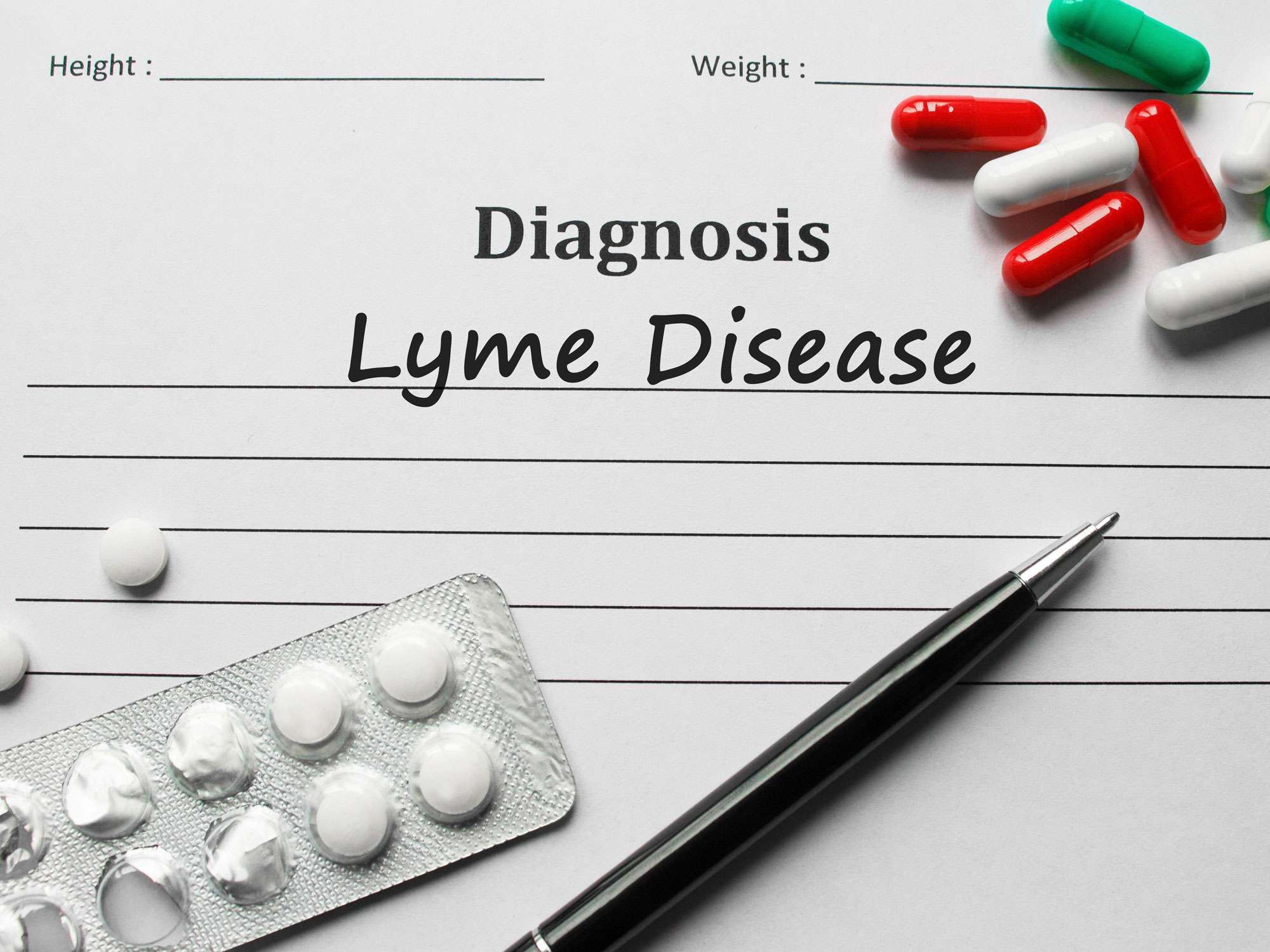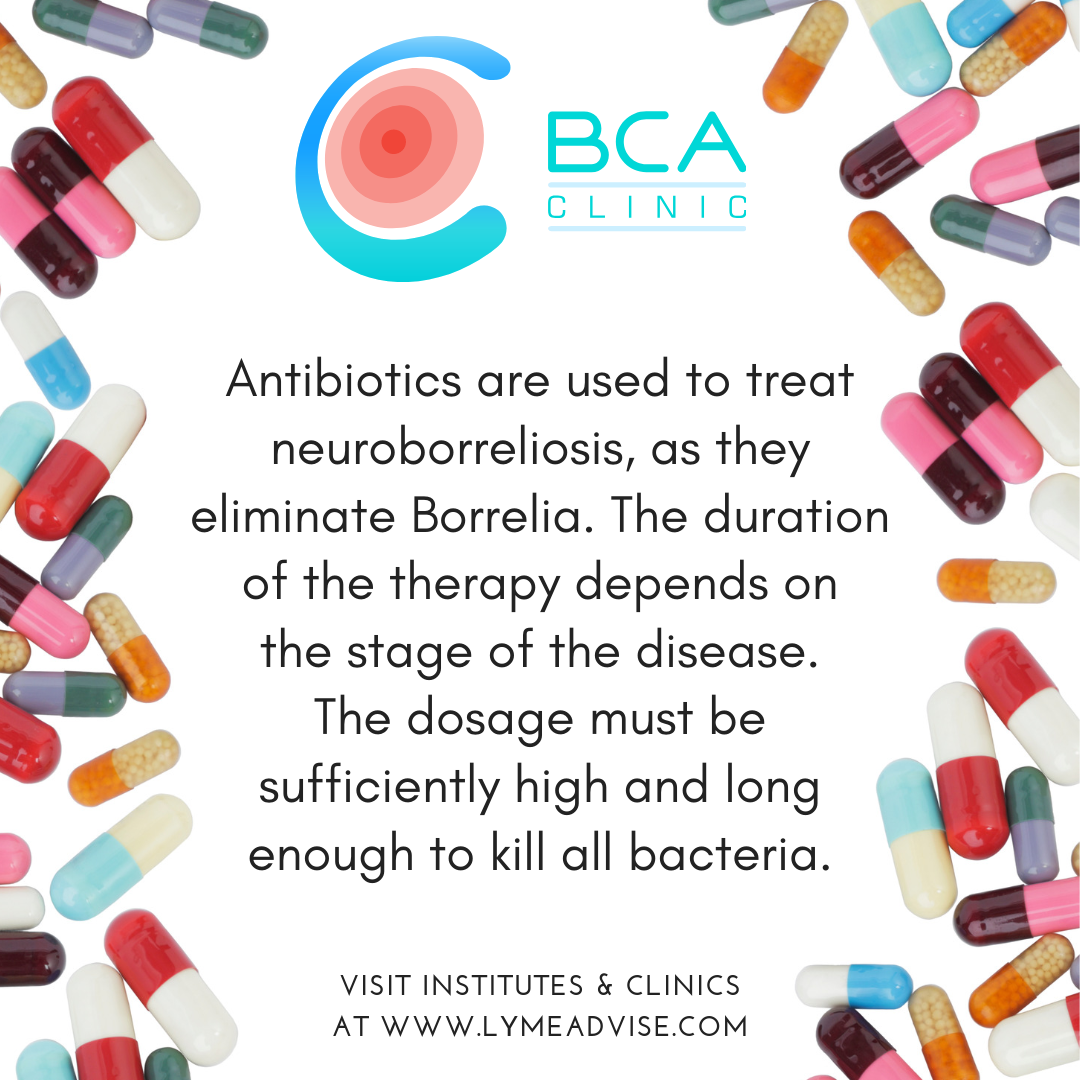Treatment For Chronic Lyme Disease
Sometimes, people go through treatment for Lyme disease but their symptoms donât go away. If this lasts over 6 months, itâs known as chronic Lyme disease or âpost-treatment Lyme disease syndromeâ .
Doctors still arenât sure why some people get PTLDS. Some believe that getting Lyme disease may cause damage to your tissues or immune system. Others believe itâs because the bacteria that causes Lyme hasnât completely gone away.
There is little evidence that taking more antibiotics at this stage will help. They may actually be harmful. Instead, your doctor will focus on treating the symptoms youâre still having. This will be different for everyone. Some people could benefit from a medicine that relieves fatigue, while others may need a drug that can help with headaches or very sensitive skin.
Your doctor could also have you try a treatment that helps people with chronic fatigue syndrome or fibromyalgia.
More research is needed to figure out how best to treat PTLDS. Itâs something that can be frustrating. Just remember: Many people who have this condition do start feeling like their old selves after a few months.
What Are The Side Effects Of Lyme Disease Treatments
Antibiotics, like all medications, have the potential for side effects. Any antibiotic can cause skin rashes, and if an itchy red rash develops while on antibiotics, a patient should see their physician. Sometimes symptoms worsen for the first few days on an antibiotic. This is called a Herxheimer reaction and occurs when the antibiotics start to kill the bacteria. In the first 24 to 48 hours, dead bacterial products stimulate the immune system to release inflammatory cytokines and chemokines that can cause increased fever and achiness. This should be transient and last no more than a day or two after the initiation of antibiotics.
The most common side effect of the penicillin antibiotics is diarrhea, and occasionally even serious cases caused by the bacteria Clostridium difficile. This bacterial overgrowth condition occurs because antibiotics kill the good bacteria in our gut. It can be helpful to use probiotics to restore the good bacteria and microbiome balance.
Who Gets Lyme Disease
Anyone bitten by an infected deer tick can get Lyme disease. Most U.S. cases of Lyme disease happen in Connecticut, Delaware, Maine, Maryland, Massachusetts, Minnesota, New Hampshire, New Jersey, New York, Pennsylvania, Rhode Island, Vermont, Virginia, and Wisconsin. But Lyme disease is found in other parts of the U.S., Europe, Asia, and Australia too.
Also Check: Can Lyme Disease Come Back Years Later
Herbal And Rx Antimicrobials That Treat Persisters
This is a newer area in Lyme treatment. To help justify these various antimicrobial options, I describe the experimental basis behind my recommendations. These options are ones I am using with various degrees of success in my Seattle practice. They all have either laboratory experiments supporting their use or published human experiments.
Laboratory-Based Experiment Options
Here is a list of prescription and herbal medicine options shown in lab experiments to kill persisters that I am incorporating into my treatments of Lyme and/or Bartonella.
- Disulfiram – work slowly up to 4 to 5 mg/kg body weight 1 time a day.
- Methylene Blue 50 mg 2 times a day.
- Liposomal Oregano, Cinnamon, and Clove Oils 1 capsule 2 times a day.
- Cryptolepis 5 ml 3 times a day.
- Japanese Knotweed½ tsp 3 times a day – start at ¼ tsp 1 time a day and then increase after two weeks to ½ tsp 3 times a day.
- Cats Claw 30 drops 2 times a day.
Human-Based Experiment Options
Here is a list of prescription medications shown in human experiments to help with persister Lyme.
- Disulfiram – work slowly up to 4 to 5 mg/kg body weight 1 time a day.
- Dapsone – work up to 100 mg or 200 mg 1 time a day.
Who’s At Risk And Where Are Ticks Found

The risk of getting Lyme disease is higher:
- for people who spend time in woodland or moorland areas
- from March to October because more people take part in outdoor activities
Ticks are found throughout the UK and in other parts of Europe and North America. There are a high number of ticks in the Scottish Highlands.
It’s thought only a small proportion of ticks carry the bacteria that cause Lyme disease. Being bitten doesn’t mean you’ll definitely be infected. However, it’s important to be aware of the risk and speak to a GP if you start to feel unwell.
Also Check: Cottages For Sale In Old Lyme Ct
Lyme Disease And Life Cycle Of East Coast Tick
In the fall, large acorn forests attract deer and mice infected with B. burgdorferi. During the following spring, the ticks lay their eggs. Tick eggs hatch into larvae, which feed on the mice, thus infecting the larvae. The infected larvae molt into “nymphs” . Infected nymphs feed on humans from spring through summer, thus transmitting the bacteria to people. Note: on the west coast, Lyme disease is spread by the western black-legged tick , which has a different life cycle.
Key Points For Healthcare Providers
You May Like: Lyme Disease And Multiple Sclerosis
What Is Late Lyme Disease
Lyme disease, also known as Lyme borreliosis, is caused by an infection with the bacteria Borrelia burgdorferi. This bacteria is disseminated through tick bites. Infected ticks usually bite small mammals, who do not develop any kind of infection from the bacteria. When humans are exposed to B. Burgdorferi from a tick bite, however, they can develop Lyme disease.
People who work outside or spend time in woodland areas, where there is greater potential for exposure to tick bites, are most at risk of infection.
Lyme disease is a condition which progresses in stages:
Consult Your Healthcare Provider Before Using Natural Remedies
If youre curious about banderol, samento, or other herbal treatments, talk with your healthcare provider about whether to incorporate any of these remedies into your Lyme disease treatment plan. While it may be tempting to want to try it, improper treatment of Lyme disease can lead to serious complications such as joint problems and nervous system disorders, so self-treating with herbs isnt recommended.
Also, it’s important to keep in mind that the side effects and risks of these herbs in regular or high doses aren’t known, nor is their safety in children, pregnant or nursing women, or people with other health conditions. Your healthcare provider can help you weigh the risks with the benefits.
Lyme Disease Doctor Discussion Guide
Get our printable guide for your next healthcare provider’s appointment to help you ask the right questions.
Also Check: Ozone Therapy For Chronic Lyme
Who Is At Risk For Lyme Disease
Anyone can get a tick bite. But people who spend lots of time outdoors in wooded, grassy areas are at a higher risk. This includes campers, hikers, and people who work in gardens and parks.
Most tick bites happen in the summer months when ticks are most active and people spend more time outdoors. But you can get bitten in the warmer months of early fall, or even late winter if temperatures are unusually high. And if there is a mild winter, ticks may come out earlier than usual.
Tetracycline Plus Macrolide Plus Grapefruit Seed Extract Plus Japanese Knotweed
- doxycycline 100 mg 2 pills 2 times a day
- clarithromycin 500 mg 1 pill 2 times a day
- grapefruit seed extract 250 mg 1 pill 2 times a day.
- Japanese knotweed½ tsp 3 times a day
Key Points:
- Tetracyclines and macrolides both block protein production by binding to the protein production apparatus in germs called ribosomes. But they each bind to a different part of the ribosome improving the blockade of protein production.
- Japanese knotweed is added here to treat persister Lyme. It also may treat growing Lyme and can lower inflammation cytokines.
You May Like: What Is The Test For Lyme Disease Called
What To Do If You Find A Tick
If you see a tick, try to remove it from your childs body. If the tick was on the body for less than 36 hours, it may help prevent infection.
To safely remove a tick:
- Use fine-tipped tweezers to grasp the tick at its head or mouth, close to the skin.
- Pull firmly on the tick until it releases the skin. Try to ease out any parts that get stuck in the skin.
- Wash the bite area with rubbing alcohol or soap and water and apply an antiseptic lotion or cream.
Quinine Derivatives To Boost Intracellular Antibiotics

Intracellular
Inside of cells, Lyme may live in cave-like structures called vacuoles. In these vacuoles, Lyme germs create a hostile acidic environment that can limit the effectiveness of various antibiotics. Quinine derivatives, like hydroxychloroquine , can make the inside of cells more basic which can help the tetracyclines and macrolides mentioned above work better.
- Hydroxychloroquine 200 mg 1 pill 2 times a day
Also Check: Lyme Disease And Liver Damage
Samento And Banderol: Uses And Research
Proponents of banderol and samento recommend them as alternatives to antibiotics, which are the standard treatments for Lyme disease. It’s said that these herbal remedies may help patients steer clear of the side effects sometimes associated with antibiotic use, such as gastrointestinal distress.
Supporters also say that banderol and samento aid in the treatment of Lyme disease by reducing chronic inflammation.
In addition, banderol and samento are sometimes used to control post-treatment Lyme disease syndrome . In people with PTLDS, symptoms linger long after they’ve completed a course of antibiotics. These symptoms include fatigue, muscle and joint pain, sleep disruption, and mood changes.
At this point, however, theres very little evidence to back up claims that banderol or samento can help treat Lyme disease. There is some research out there showing that a combination of samento and banderol may help knock out Borrelia burgdorferi, the bacterium responsible for Lyme disease. One study often pointed to, however, lacks rigorous peer review. Scientists have yet to confirm these findings or those of related research in clinical trials involving Lyme disease patients.
What Are The Risk Factors For Post Treatment Lyme Disease
Risk factors for Post Treatment Lyme Disease include:
- Delay in diagnosis
- Increased severity of initial illness
- Presence of neurologic symptoms
Increased severity of initial illness, the presence of neurologic symptoms, and initial misdiagnosis increase the risk of Post Treatment Lyme Disease. PTLD is especially common in people that have had neurologic involvement. The rates of Post Treatment Lyme Disease after neurologic involvement may be as high as 20% or even higher. Other risk factors being investigated are genetic predispositions and immunologic variables.
In addition to Borrelia burgdorferi, the bacteria that causes Lyme disease, there are several other tick-borne co-infections that may also contribute to more prolonged and complicated illness.
Also Check: All Pro Automotive Old Lyme
Synovial Fluid Analysis Imaging And Other Tests
On presentation, joint aspiration is usually done for diagnostic purposes to rule out the presence of other arthritides such as crystalline arthropathy or staphylococcal septic arthritis. Joint fluid white cell counts are usually inflammatory in the range , but cell counts as low as 500 or as high as 100,000 cells/mm3 have been reported. Although tests for rheumatoid factor or antinuclear antibodies typically yield negative results, antinuclear antibodies in low titer may be detected. Peripheral white blood cell counts are usually within the normal range, but inflammatory markers, such as ESR and CRP, may be elevated. Imaging studies are not required for diagnosis or are not typically performed. The major reason for imaging studies in Lyme arthritis is when there are concerns for alternative diagnoses.
In patients with Lyme arthritis, plain films, MRI scanning or ultrasound typically show non-specific joint effusions, while MRI studies utilizing contrast dye, may display synovial thickening or enhancement. In adult patients, imaging studies may show co-incidental degenerative changes or chronic mechanical injuries, but these abnormalities would not be expected to cause significant synovitis or inflammation. Lyme arthritis is not rapidly erosive, but with longer arthritis durations, joint damage can be seen on radiographic studies. Finally, MRI scanning may be useful in the planning of synovectomies by determining the extent of synovitis within the joint.
Antimicrobials That Kill Growing Phase Cysts
Intracellular and Extracellular
Note: I work with the following agents as anti-cyst agents based on the mechanism by which these antibiotics work and some scientific experiments. For the Rifamycins, there are no laboratory experiments showing these agents work against cysts. Clinically, I see great benefit in using the Rifamycins as my anti-cyst agents – so I list them here.
Rifamycins
- Rifampin 300 mg 2 pills 1 time a day or 1 pill 2 times a day
- Rifabutin 150 mg 2 pills 1 time a day
Azoles
- Tinidazole 500 mg 1 pill 2 or three times a day usually pulsed for four days on then three days off of each 7 days
- Metronidazole 500 mg 1 pill 2 or three times a day usually pulsed for four days on then three days off of each 7 days.
Herbal
- Grapefruit seed extract 250 mg 1 pill 2 times a day. Note this is an herbal antibiotic that I find as effective as the prescription options in this list.
Also Check: Lyme Literate Doctor Los Angeles
Lyme Disease: Updated Recommendations From The Idsa Aan And Acr
Key Points for Practice
Prophylaxis for Lyme disease is most beneficial for high-risk bites, which include those from an Ixodes tick in an endemic area that was attached for at least 36 hours.
Antibiotic treatment is recommended for classic erythema migrans or a possible Lyme presentation with positive serum antibody testing.
Routine testing for Lyme disease is not beneficial in psychiatric disorders, behavior disorders, or chronic cardiomyopathy.
From the AFP Editors
Lyme disease, a tick-borne spirochete infection caused by Borrelia burgdorferi, is most common in three regions in the United Statesthe northeastern states from Virginia to Maine the upper Midwest, especially Wisconsin and Minnesota and northern California. A multidisciplinary panel representing the Infectious Diseases Society of America , the American Academy of Neurology , and the American College of Rheumatology has published recommendations on the prevention, diagnosis, and treatment of Lyme disease.
When To See A Doctor
A person should see a doctor if they have recently received a tick bite. It is not possible to know whether a tick is carrying Lyme disease, and the symptoms may take weeks to appear.
The earlier a person receives a diagnosis and treatment, the higher the likelihood of a quick and complete recovery.
It is not always possible for a person to tell if a tick has bitten them. As such, people should also see a doctor if they experience any Lyme disease symptoms. A doctor will ask about the persons symptoms and duration and whether the person has spent time in tick-infested areas.
Also Check: Early Signs Of Lyme Disease In Adults
What Treatment Approach Did Well Patients And High Responders Use
We asked patients what their treatment approach was and listed four options a) antibiotics, b) alternative treatments, c) both antibiotics and alternative treatments, and d) no treatment at all. High treatment response was most closely associated with the use of antibiotics compared to patients who were using alternative treatments alone or forgoing treatment altogether. Treatment with antibiotics for Lyme disease was far higher among well patients and high responders compared to non-responders .
As you can see in the chart below, many patients who were taking antibiotics were also taking herbal supplements, which can be antimicrobial . So it is possible that there was a synergistic effect between antibiotics and herbal supplements.
Iv Antibiotic Regimen: Cephalosporin Plus Azole Plus Liposomal Cinnamon Clove And Oregano

- ceftriaxone 2 gm IV 2 times a day for 4 days on and 3 days off
- tinidazole 500 mg taken orally 1 pill 2-3 times a day for 4 days on and 3 days off in 7-day cycles
- liposomal cinnamon, clove, and oregano capsules 1 pill 2 times a day
Key Points:
- Various antibiotics can be used as IV. I use this one most commonly because it is the easiest to administer and one of the lowest cost IV regimens. The ceftriaxone is given in a syringe and injected over 10 minutes. This is also a pulse dose regimen . Ceftriaxone could be given daily instead as 2 gm IV 1 time a day.
- I have found various pulse dose regimens of tinidazole to work. These include 2 weeks on and 2 weeks off or in the regimen seen here.
Read Also: Lyme Ct Real Estate For Sale